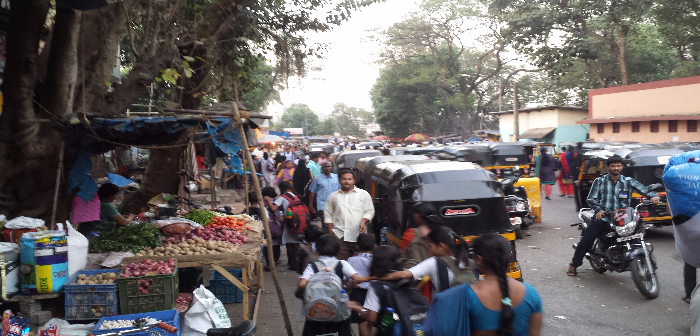GeoGebra: A disruption in STEM education

GeoGebra: A Disruption in STEM Education
Disruption is not a word regularly used when discussing a positive event or experience. Indeed, to disrupt is to ‘introduce confusion,disorder, create disarray or confusion and turmoil and generally wreak havoc’. But of course, ‘disruption’ can also be a good thing - particularly when the status-quo being disrupted is less than optimal or desirable. In fact, disruption seems to have taken on a whole new meaning in recent times, particularly when discussing changes to the hermeneutics - ways of knowing and doing - that have governed teaching and learning for generations. In this new nomenclature, disruption is viewed as a positive stochastic event, where inefficiencies and inequalities are exposed; replaced with new processes and practices where, for example, innovations in technology, resources, and pedagogy are introduced in a way that augments the best practices of educators, in support of advancements in teaching and learning opportunities for all.
GeoGebra has itself been described as a disruptive force in STEM education, by putting the world’s leading software and materials into the hands of students and teachers everywhere - the very same quality of software, service and support which is on par with the many of the world’s leading institutions and curricula.
In this talk I will share a few examples of the disruptions in STEM education through GeoGebra, and how this applies across the four conference themes. By doing so, I will suggest that in order to be properly identified as a positive disruptive force in education, GeoGebra must create opportunities for new ways of knowing and doing which contribute to the expansion of universally accessible, free and open education.
Historical, Philosophical, and Socio-cultural Studies
There is perhaps nothing more compelling for students than stories of the great minds and discoveries of the STEM education community, from recent to distant past. What student doesn’t wonder at the remarkable engineering underpinning the Mars expeditions [http://ggbtu.be/m80865], while also marvelling at the seeming simplicity in the diffraction of light to form a rainbow [http://ggbtu.be/m1428461]. Both of these ideas, concepts, are relevant to our everyday, and both retain a universal cultural significance, rooted in fundamental mathematical principles. Prior to the availability of dynamic geometry software, these concepts were difficult to demonstrate in a classroom, and near-impossible for students to explore and model independently. GeoGebra disrupts the barriers to access mathematics and the exploration of key cultural and historical concepts in primary through tertiary education.
Cognitive and Affective Studies
GeoGebra has often been described as a ‘playground’ or ‘laboratory’ for exploring mathematics. While the need for pencil, paper and 2D constructions in geometry and algebra remains ever-relevant, it is difficult to argue with the idea that the way in which we conceive and represent ideas hasn’t been profoundly changed through dynamic geometry. This is perhaps represented best by examples in teaching and learning 3D geometry. For example, teaching conics couldn’t be simpler for both teachers and students through the use of resources such as this GeoGebraBook shared across the GeoGebra global community [http://ggbtu.be/b334273]. Suddenly, through GeoGebra, teachers and students can assemble and disassemble 3 dimensional objects, expanding the possibilities for representation, reasoning and learning anywhere in the world.
Curriculum and Pedagogical Studies
It could be said that, aside from access to inspiring teachers, the single greatest barrier to advances universal access to a quality education is the lack of teaching and learning materials and personalized support. Teachers and students in just about every country of the world are creating and sharing dynamic mathematics materials, e-books and lesson plans through GeoGebra’s web services. Where teachers were once solely dependent upon the textbooks and resources of their schools or purchase, through GeoGebra they can search, copy, and adapt freely available teaching materials on just about any STEM education topic, supporting just about every aspect of the curriculum, from primary through tertiary education. What’s more, teachers and students can collaborate with each other across borders and topics, sharing expertise, materials, and a passion for learning through collaboration. Consider, for example, this remarkable member of the GeoGebra community, who has shared over 4000 materials with teachers and students from around the world [https://tube.geogebra.org/ccambre].
New Media
This fourth and final thread of the conference agenda is perhaps the only area where GeoGebra might not be considered a disruptive force. On the contrary; in the area of New Media, GeoGebra is a leading constructive force, shaping the technology and education space through its global ecosystem. However, even here there is an opportunity for GeoGebra to remain a disruptor and instigator of positive change by creating and supporting the world’s largest software, service and community network for open and free teaching and learning.
It could be said that it is in this category, New Media, that GeoGebra must continue to work the hardest to ensure it/we/us continue to innovate and create new opportunities for STEM education - contributing to and creating as many or more historical, cognitive, and pedagogical opportunities than it disrupts. And it is through gatherings like this one where GeoGebra is shaped by creative and critical minds to imagine the future of STEM education again, and again...
Links:
Global Gathering 2015: http://web.geogebra.org/partners/G3-2015-RetrospectiveDeck.pdf
ReaSense Demo: http://test.geogebra.org/~mathieu/realsense-demo.mp4
RealSense Football: http://test.geogebra.org/~mathieu/realsense/football.mp4
RealSense School: http://test.geogebra.org/~mathieu/realsense/school.mp4
My World My Math: https://youtu.be/zopJEsKcUoU